Ideas about constructing high-speed underground trains in Hungary date back to the 19th century. By the beginning of the 20th century, concrete plans had been created, each of which contained a north-south line.
However, after World War II, an east-west connection became more important, both strategically and for transport. The metro was a prestigious project of the Rákosi Era, which aimed to alleviate some of the capital's serious traffic problems at the time, but also served military purposes.
After a forced break in the 1950s, construction of the east-west metro resumed in the 1960s, and in 1968 a final decision was reached regarding the north-south line.
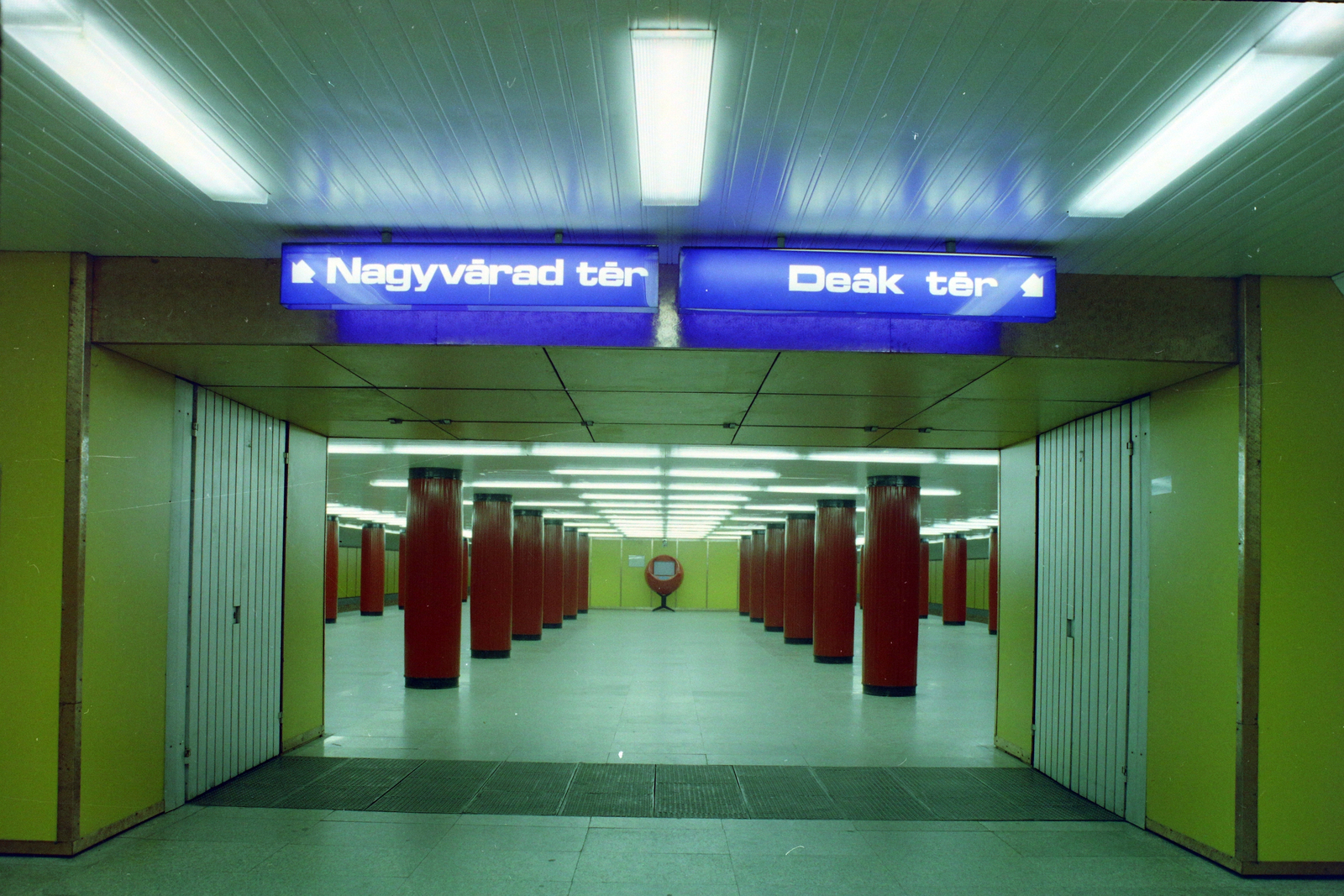
The first stage was opened in 1976 (Photo: Fortepan, Uvaterv)
Work began 50 years ago, in 1970. Originally, the 14,8 km line was planned to be completed 1985, but changes in the economy and transport policy brought changes to both the route and the deadline. Instead of Határ Road, Kőbánya-Kispest became the southern terminus (although this was intended as a temporary solution, Kőbánya-Kispest would have become a sub-branch, and Határ Road station was built in a way which ensured the metro could be continued at any time.)
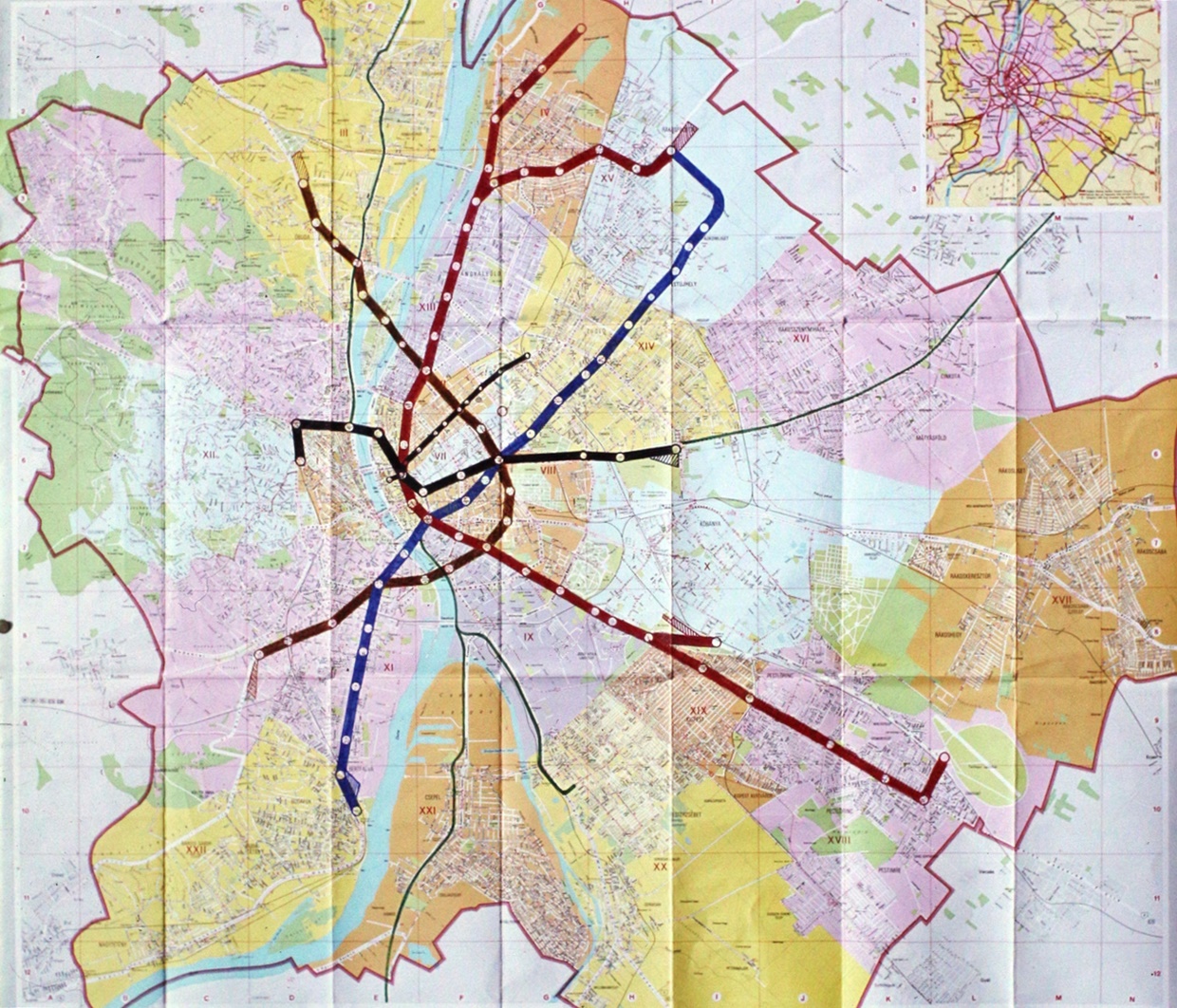
Plan of the Budapest Metro Network in 1974 (Photo: Fortepan/Uvaterv)
Káposztásmegyer became the planned destination in the north, increasing the length of the line to over 20 kilometres. Sections were completed one after the other from 1976 onwards. In 1976 the line between Deák and Nagyvárad Squares was completed, which was extended to Kőbánya-Kispest in 1980. Work finished on the section to Lehet Square (Élmunkás Square at the time) in 1982, and in 1984 the tunnel reached Árpád Bridge. The section to Újpest was completed after a six-year hiatus.
On 15 December 1990 the daily Magyar Nemzet reported:
"Budapest metro network expanded with new section today Following the opening of continuation of the north-south line, the well-known trains will now run along the new section from Árpád Bridge to Bajcsy Zsilinszky Road in Újpest. The new stations are Forgách Street, Gyöngyösi Street, Újpest-városkapu, Újpest-központ.
Minister for Transport, Communications and Water Management, Csaba Siklós opened the new section – which cost 10 billion HUF at a ceremony on Friday afternoon."
Thus, the present form of the line was completed 30 years ago. However, it was not actually completed. Plans had been made for it to run to the housing estate in Káposztásmegyer in the north. Space for the metro was even left open during the construction of the estate. Furthermore, tram 14 was created as a metro replacement service, but by 1990 – when the metro reached Újpest – the construction of the South Buda – Rákospalota metro came into focus.
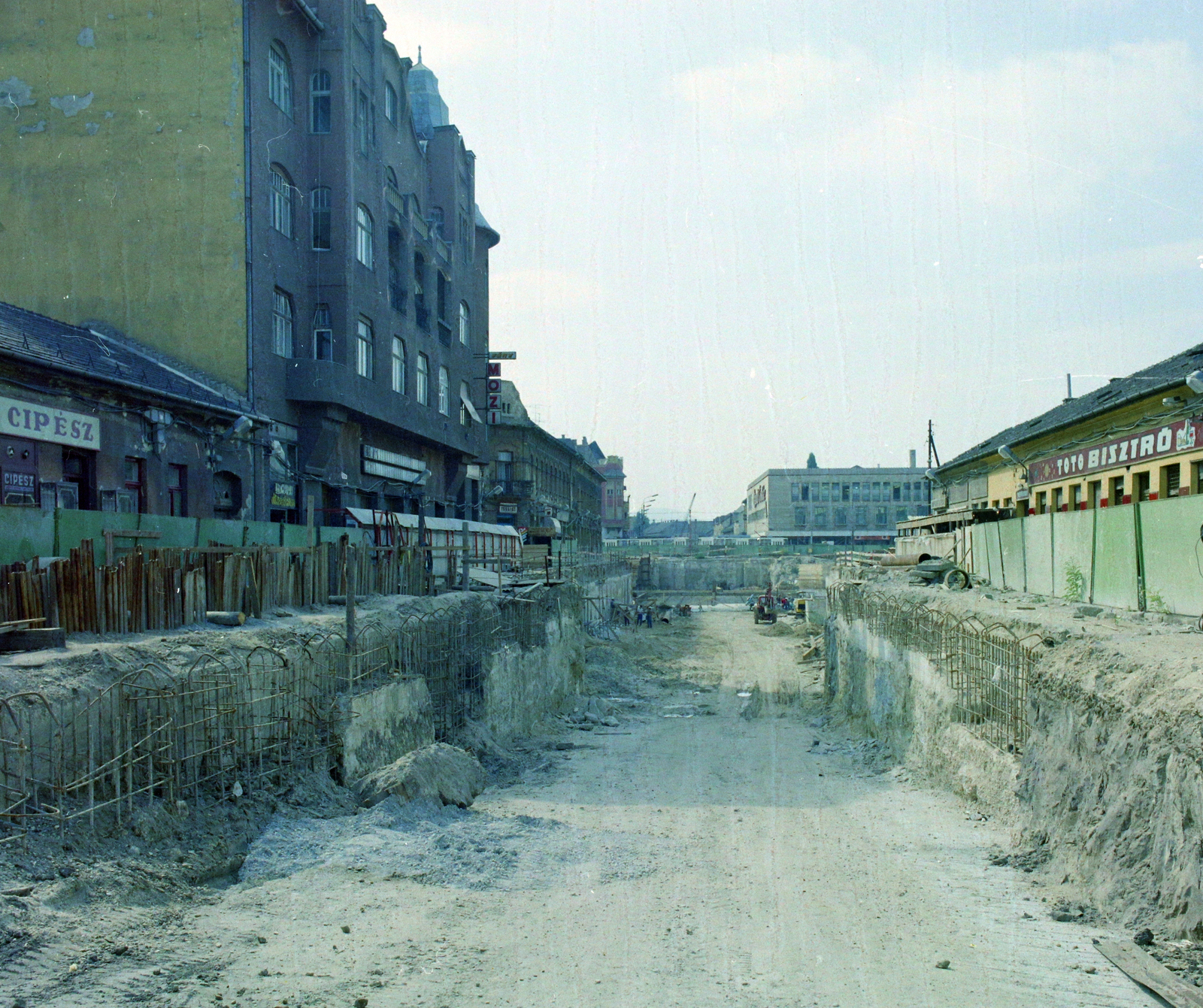
Construction of the last stage of the metro in 1987. Today, Váci út runs above the ditch (Photo: Fortepan, Uvaterv)
The ornamentation of the Budapest metro falls behind that of Moscow lines that influenced it (though Stalin-baroque stations were planned for the east-west line in the 1950s). Still, the stations were designed according to an overarching concept.
The colour scheme of the new stations was determined by an expert body, the Hungarian National Colour Committee, taking into account the existing differences of the three underground railways of the time. The aim of the design was for the colours and symbols in metro stations to indicate which section of the city a passenger was in.
Magyar Nemzet wrote about this, referring to the Hungarian National Colour Committee, on 12 December 1990:
"The system of forms and colours indicate which metro line a passenger is travelling on and where they are in the city. The regions and metro lines of Budapest have been colour-coded. Similarly to the symbols for the lines themselves, stations are indicated by circles on the north-south line, squares on the east-west line and triangles on the small underground railway."
It is no coincidence that the north-south metro line is known as the blue line. The colour scheme of the four new stations also aligned with this concept. The station on Forgách Street was Coventry blue, Gyöngyösi Street Delphi blue, Újpest városkapu was painted Copenhagen blue, while the terminus, Újpest központ was painted crocus blue.
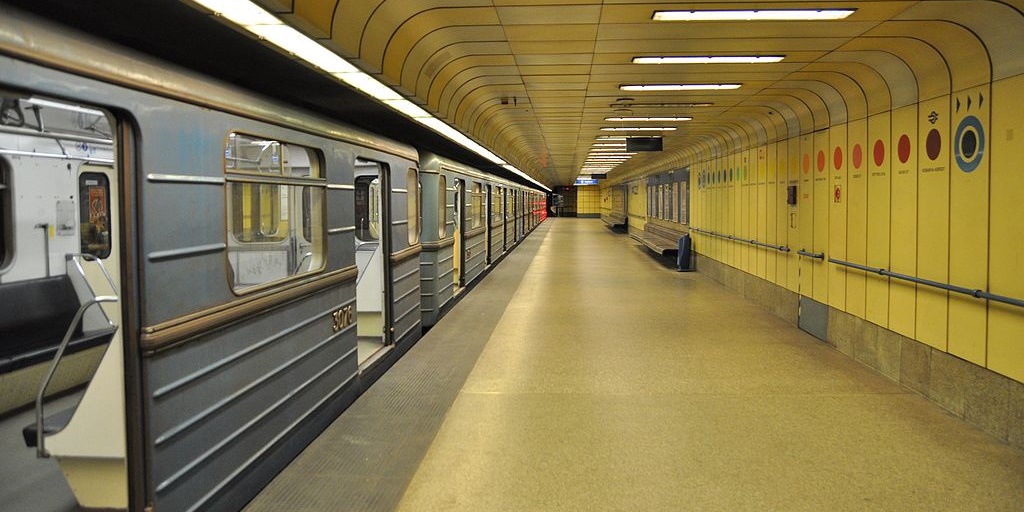
Circles appeared on the walls of the stations (Photo: metros.hu)
The four-station section runs in a cut-and-cover tunnel as the line follows the route of Váci Road. A significant lack of finances hampered construction. Pro Urbe Award-winning Professor Endre Kerkápoly, claimed in an interview given to Népszava, that if the necessary funds had been available when construction began, the section would have been completed by 1988.
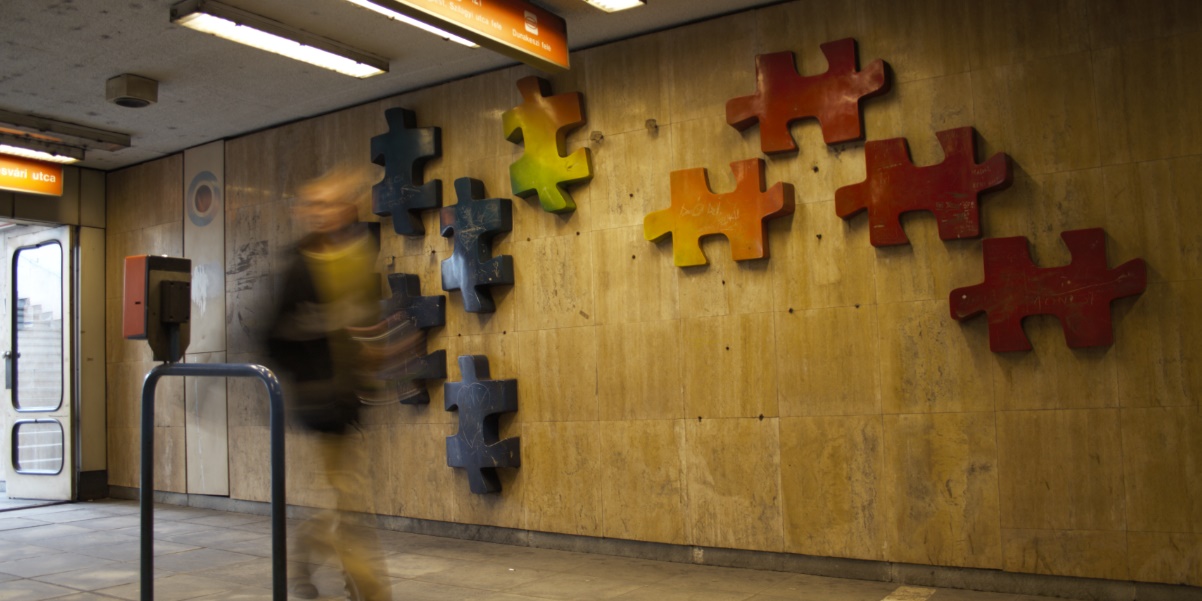
Ornaments in the Újpest-Városkapu station (Photo: Barnabás Kiss/Hungarian Museum of Science, Technology and Transport)
The renovation of metro line 3 has been underway for several years and began on the youngest, northern section of the tunnels.
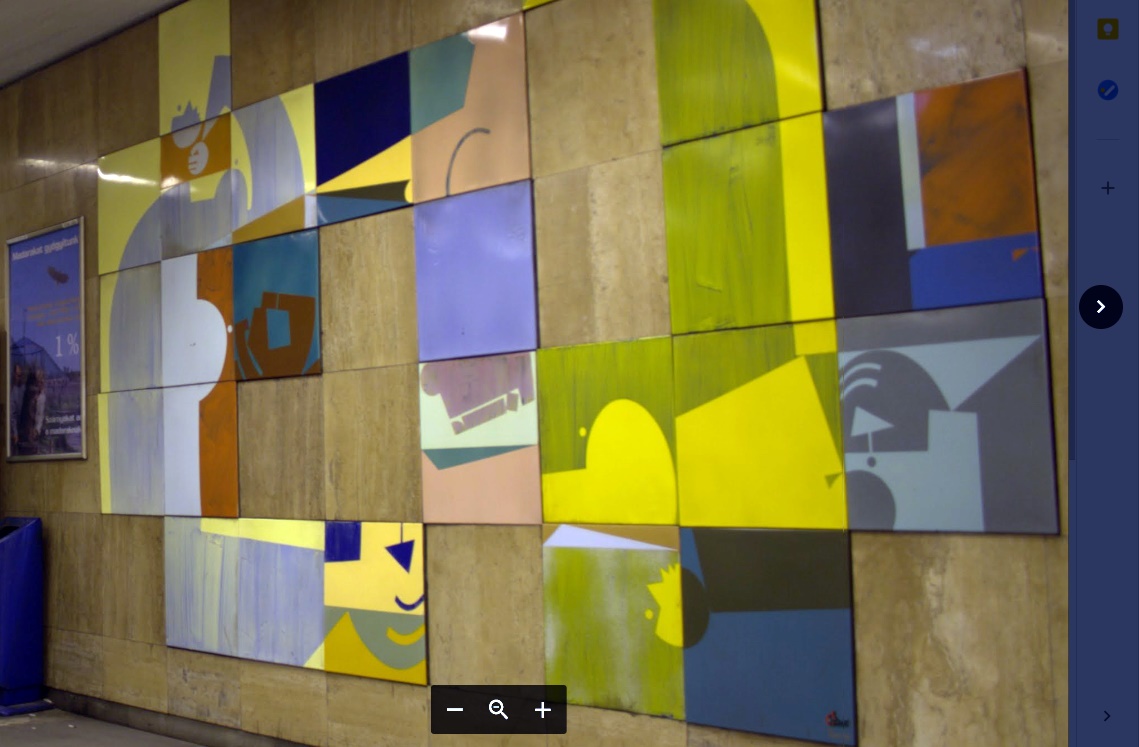
Another ornament in the Újpest-Városkapu station (Photo: Barnabás Kiss/Hungarian Museum of Science, Technology and Transport)
However, the old decorative elements have not been destroyed. After being assessed by experts from the Museum of Transport, several ornaments were moved to the warehouses of the museum.
Cover photo: Train glides through a station (Photo: Barnabás Kiss/Hungarian Museum of Science, Technology and Transport)

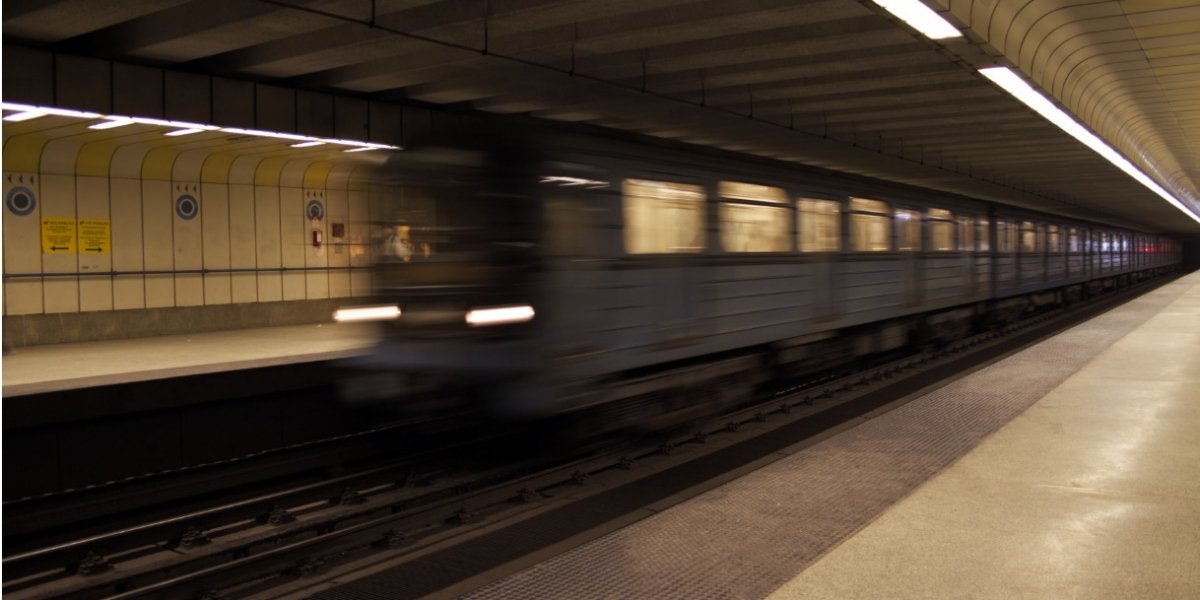






Hozzászólások
Log in or register to comment!
Login Registration